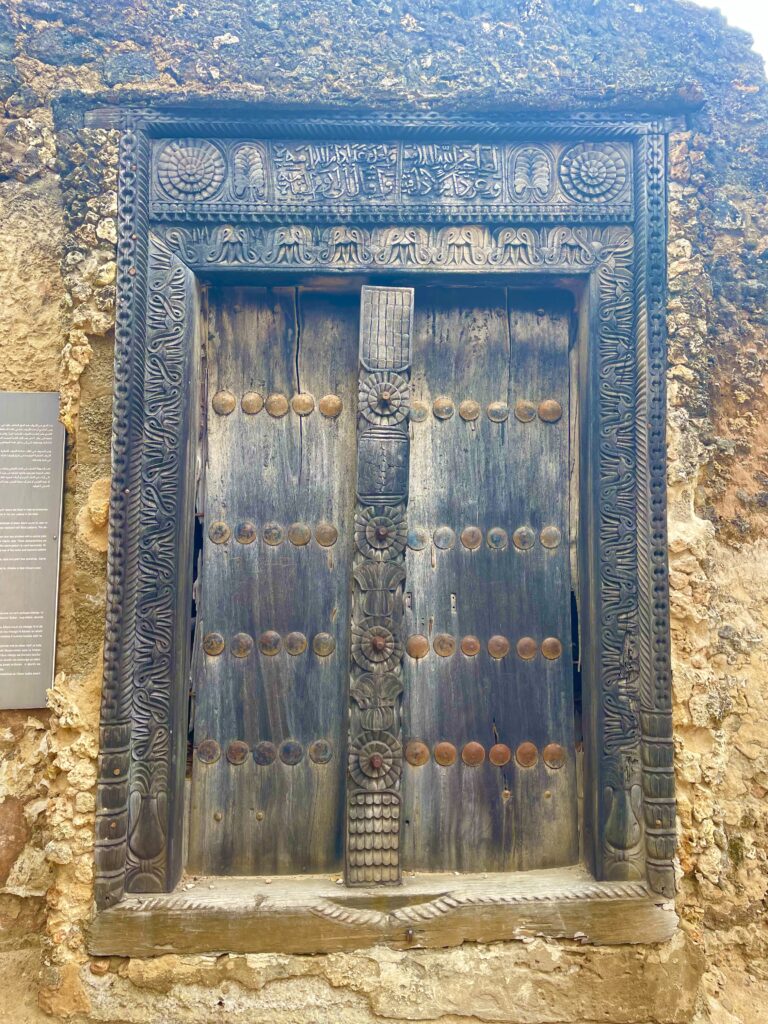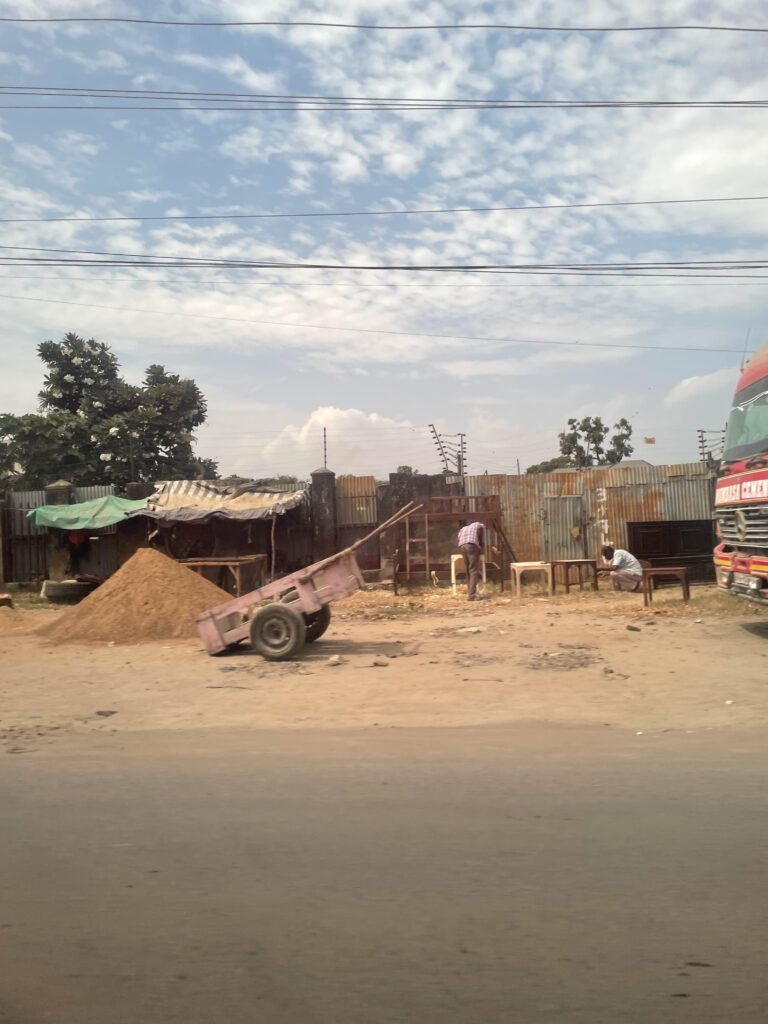We arrive in Mombasa, Kenya in the early morning around 5:30 am. There is no need for an alarm clock as we can hear loud African drums and singing outside our stateroom. A large singing troupe dressed in right colourful African wear greet our arrival.

Opting for a private tour of the city, we meet our guide just outside the port. Francis, it turns out, is not actually a guide but rather a driver who will accompany us to several sites. His English is limited but we understand a few of the things he tells us along the way.
The city reminds us of Nairobi. There are a lot of building and roads in disrepair. Though plastic bags are now prohibited, we see no evidence that it is making any difference as there is garbage in parks and along the roads. Sometimes, garbage is burned right off the sidewalks.
Our first stop is at the elephant tusk monument. These tall and imposing aluminum tusks were built in the late 1950’s to commemorate a visit by Princess Margaret and also form the letter “M” for Mombasa. One side of the street is closed off for filming youths of all abilities enjoying biking and rollerblading.


Francis takes us on a walk in nearby Uhuru Gardens. Large fruit bats hang from the trees. There is also a large amount of vagrant men who simply sit or sleep in the park with nowhere to go. We are thankful for Francis’ presence especially after hearing passengers on one of the bus from our ship were cornered on a walkabout. Thankfully, all ended well for them. The crime rate is high in Mombasa and we would never advise going on your own. And beware of the motorcycles and Tuk-tuks buzzing all over the place! It’s a miracle we don’t see any accidents.


Our next stop is Fort Jesus but before we go in, Francis waits for money to be transferred to him to pay the entrance fee. We are puzzled why this wasn’t organized beforehand. After a 15 minute wait, we enter.
It’s a UNESCO World Heritage site built by the Portuguese in the late 1590’s. Later, the Omani and British empires occupied the fort and thus, some architectural features are left behind such as the beautiful Omani carved doors. We will see these doors again in Zanzibar and Dar es Salaam. A giant skeleton of a humpback whale is on display. We also see a huge millipede making its way amidst the tourists.





Before we set out across the street inn Old Town, we take a refreshing break under the trees with some locals who invite us to sit. An old man happily invites the stray cats and kittens for a syringe filled with milk.

Old Town, which is also a UNESCO World Heritage site comprises any of many colonial Portuguese styles from the 16th century and modern Islamic architecture. One building at the entrance, is in disrepair with an unfinished top floor, hence allowing a tree to wrap itself around it.






Our final destination is Haller Park. Again, the process of the funds transfer to pay the admission is repeated along with the wait. The entry process is rather flawed and puzzling. As we wait, no guards watch for people entering sans ticket. After Francis buys the tickets, we walk about 200-300 feet to a thatched hut where he hands over our tickets to be double-stamped and then his name and phone number are manually recorded in a book. Again, no one would have stopped us had we wished to bypass the administration hut.
Billed as a showcase for animal rehabilitation, sadly the park seems to have lost many of its main attractions. While the nature walk in the rehabilitated wasteland is wonderful in the heat of the day, the animals are few and far between except for the monkeys who are everywhere! We do see some snakes (behind dirty glass cages), crocodiles, two oryx, two hippos and one warthog but the giraffes and animal orphanage are nowhere to be seen. Empty fish basins or filled with green slime are plenty. We only see maybe five small butterflies in the butterfly sanctuary.
Many of the other guests we meet along the nature paths all express their disappointment.







As seen on our other trips, should you need a trip to the washrooms, you will be met with the dreaded “hole in the ground”. There is no toilet to sit down on but merely like a urinal on the floor that can be flushed. Women wearing pants or shorts find themselves having to take them off. Skirts or dresses are highly recommended!

We grabbed a cold local beer before heading back to ship. On the way, we see many roadside vendors selling bed frames. There are hundreds of them. We can’t figure out why bed frames? And piles of sand dropped everywhere alongside the road.



We can add a pin to our world board for Mombasa but it is not a place that we would ever return to.
Next, is Zanzibar!
Recent Comments